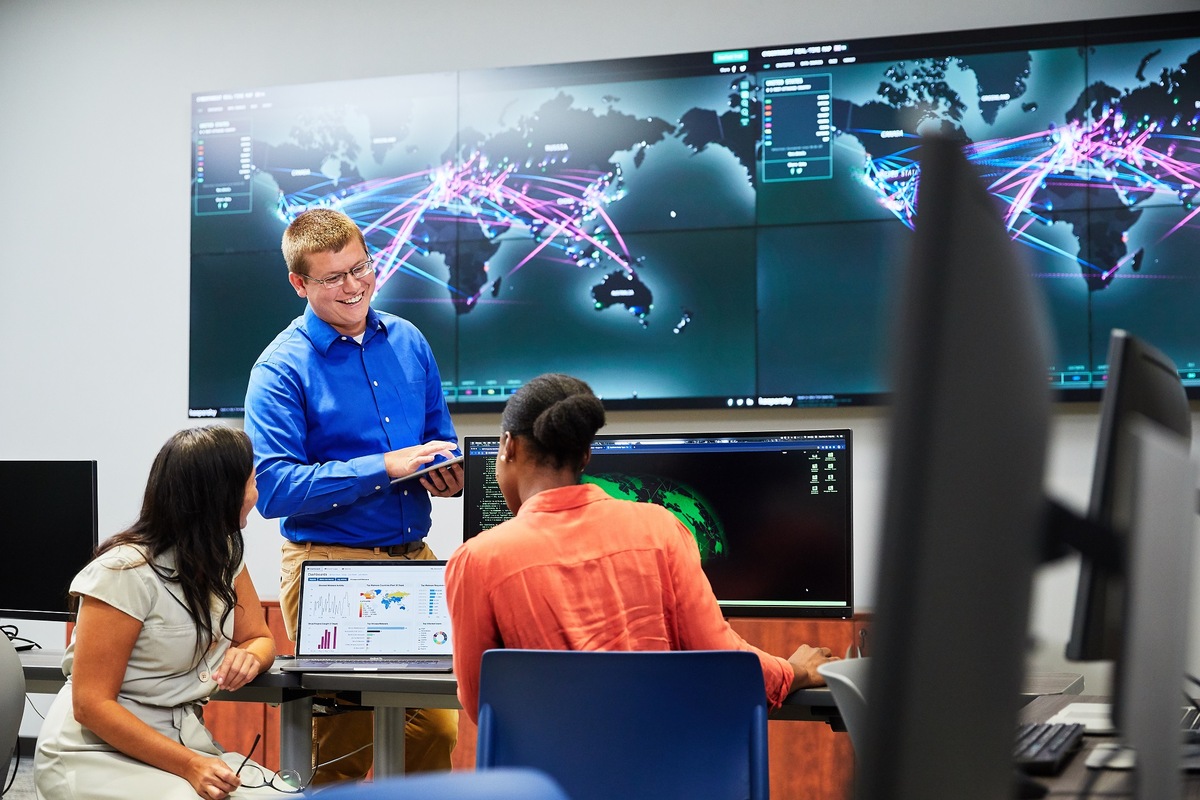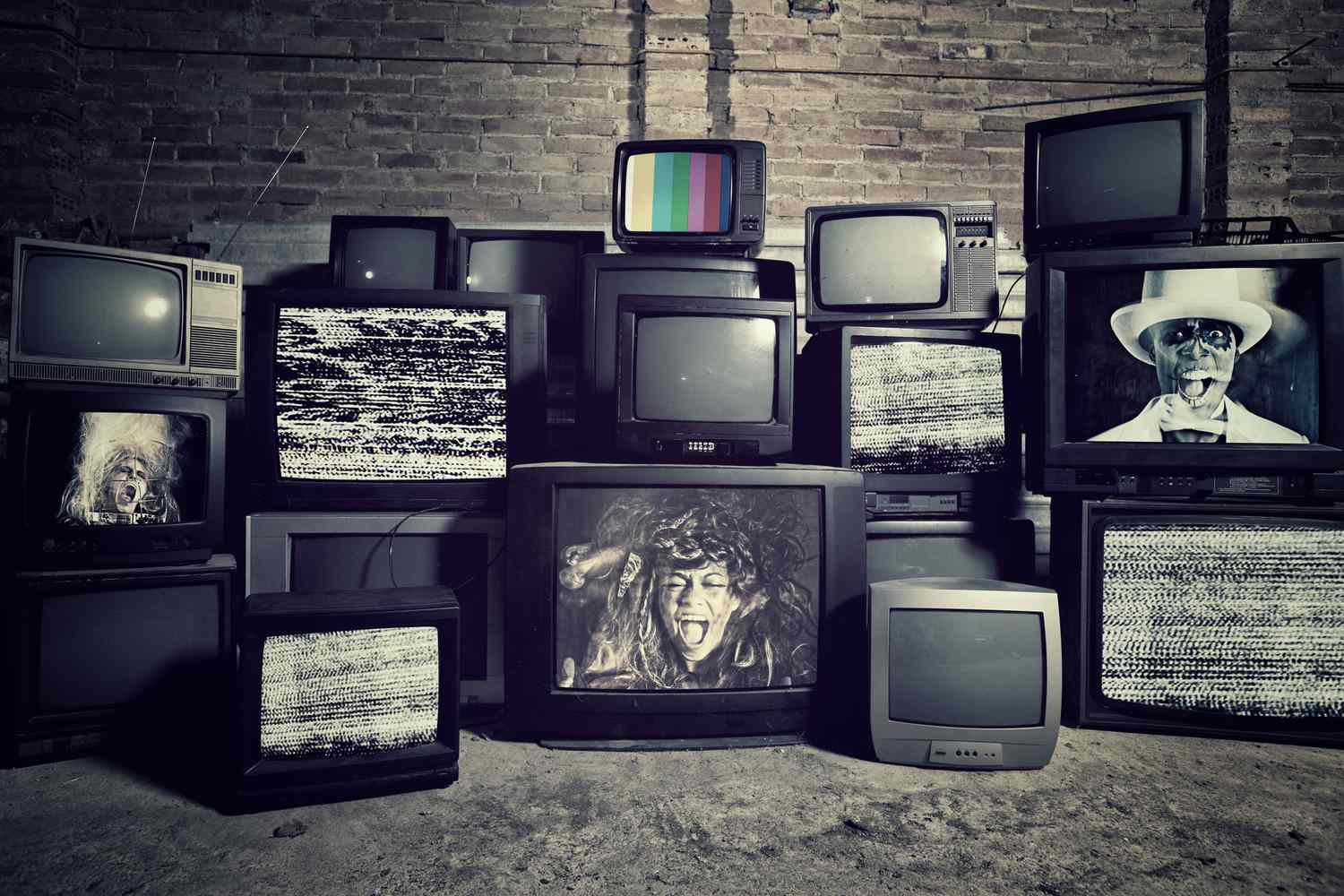Home>Technology>Home Entertainment Systems>Why Is Computer Science Used In Movies And Television


Home Entertainment Systems
Why Is Computer Science Used In Movies And Television
Published: December 21, 2023
Discover the role of computer science in creating captivating home entertainment systems for movies and television. Explore the innovative technologies shaping the future of home entertainment.
(Many of the links in this article redirect to a specific reviewed product. Your purchase of these products through affiliate links helps to generate commission for Storables.com, at no extra cost. Learn more)
**
Introduction
**
In the ever-evolving landscape of entertainment, the integration of computer science has become increasingly prevalent. This integration has revolutionized the way stories are told and visual effects are portrayed in movies and television. The seamless fusion of computer science with entertainment has not only elevated the quality of on-screen experiences but has also opened new frontiers for creativity and storytelling.
The utilization of computer science in the realm of entertainment is not merely a technicality; it is a powerful tool that has redefined the boundaries of imagination. As we delve into the intricacies of this symbiotic relationship, we uncover the multifaceted impact of computer science on the entertainment industry. From the dazzling visual effects that transport audiences to otherworldly realms to the intricate portrayal of hacking and cybersecurity, the influence of computer science in entertainment is both profound and pervasive.
This article aims to unravel the underlying reasons behind the pervasive use of computer science in movies and television. By exploring the advancements in visual effects, the role of computer science in storytelling and plot development, the pursuit of realism and accuracy, and the depiction of hacking and cybersecurity, we will gain a comprehensive understanding of the profound influence of computer science on the entertainment landscape. Furthermore, we will delve into the future trends that are poised to further entwine the realms of computer science and entertainment, offering a glimpse into the boundless possibilities that lie ahead.
**
Key Takeaways:
- Computer science has transformed movies and TV with stunning visual effects, lifelike animation, and immersive virtual reality, taking storytelling to new heights and captivating audiences worldwide.
- The integration of computer science has made movies and TV more realistic, accurate, and engaging, especially in portraying hacking and cybersecurity, while also shaping the future of entertainment with AR, AI, and blockchain technologies.
Advancements in Visual Effects
**
The integration of computer science has revolutionized the realm of visual effects in movies and television, propelling the art of storytelling to unprecedented heights. Advancements in computer-generated imagery (CGI), animation, and virtual reality have empowered filmmakers and creators to craft immersive and visually stunning worlds that captivate audiences worldwide.
Computer-generated imagery serves as the cornerstone of modern visual effects, enabling the creation of breathtaking landscapes, fantastical creatures, and awe-inspiring spectacles that were once confined to the realm of imagination. The seamless integration of CGI with live-action footage has blurred the lines between reality and fiction, transporting viewers to realms that transcend the limitations of the physical world. From the enchanting vistas of mythical realms to the heart-stopping action sequences in outer space, CGI has imbued films and television shows with a sense of wonder and grandeur that was previously unattainable.
Furthermore, the evolution of animation techniques driven by computer science has elevated the art of storytelling in animated films and series. The intricate movements, lifelike expressions, and nuanced emotions conveyed by animated characters are a testament to the transformative power of computer science in breathing life into the fantastical and the mundane alike. Whether it’s the endearing antics of animated protagonists or the breathtaking choreography of animated action sequences, computer science has endowed animators with a vast canvas upon which to weave compelling narratives and evoke genuine emotional resonance.
Virtual reality (VR) has emerged as a groundbreaking frontier in visual effects, offering audiences an immersive and interactive viewing experience. Through the fusion of computer science and storytelling, VR has enabled viewers to step into the shoes of characters, explore immersive environments, and partake in narratives in unprecedented ways. This convergence of technology and entertainment has redefined audience engagement, inviting viewers to become active participants in the unfolding stories, thus transcending the traditional boundaries of passive observation.
The advancements in visual effects driven by computer science have not only expanded the creative horizons of filmmakers and creators but have also enriched the viewing experiences of audiences worldwide. The seamless integration of CGI, animation, and virtual reality has redefined the art of visual storytelling, ushering in an era where the boundaries of imagination are limited only by the capabilities of technology and the boundless creativity of storytellers.
**
Storytelling and Plot Development
**
The infusion of computer science into the realm of storytelling and plot development has redefined the narrative landscape of movies and television, offering creators a vast array of tools to craft compelling and immersive experiences for audiences. From algorithmic storytelling to data-driven plot development, computer science has become an indispensable ally in the art of weaving captivating narratives that resonate with viewers on a profound level.
One of the most profound impacts of computer science on storytelling lies in the realm of algorithmic storytelling, where complex algorithms are employed to analyze and predict narrative structures and audience preferences. This data-driven approach enables creators to tailor stories and characters to resonate with diverse audiences, thus enhancing the relatability and emotional impact of the narratives. By leveraging data analytics and machine learning, creators can gain valuable insights into audience preferences, narrative tropes, and character dynamics, thus refining their storytelling prowess and delivering narratives that strike a chord with viewers.
Moreover, the integration of computer science has facilitated the evolution of interactive storytelling, where audiences are empowered to influence the narrative trajectory through immersive and dynamic experiences. This convergence of technology and storytelling has given rise to branching narratives, alternate endings, and interactive plotlines, offering viewers a sense of agency and immersion unparalleled in traditional linear storytelling. Through the utilization of interactive platforms and immersive technologies, creators can engage audiences in unprecedented ways, blurring the boundaries between fiction and reality and inviting viewers to become active participants in the storytelling process.
Furthermore, the analysis of big data and audience metrics has empowered creators to tailor narratives and character arcs to resonate with diverse demographics and cultural sensibilities. By harnessing the power of data analytics, creators can gain insights into global audience preferences, cultural nuances, and societal trends, thus sculpting narratives that transcend geographical boundaries and resonate with viewers on a universal scale. This data-driven approach to plot development and character dynamics not only enhances the inclusivity of storytelling but also fosters a deeper sense of connection and empathy among audiences worldwide.
The integration of computer science into storytelling and plot development has ushered in a new era of narrative innovation, where data-driven insights, interactive experiences, and algorithmic storytelling converge to redefine the art of captivating audiences. This symbiotic relationship between technology and storytelling continues to shape the future of entertainment, offering boundless opportunities for creators to craft narratives that transcend the confines of traditional storytelling paradigms.
**
Computer science is used in movies and television to create special effects, design virtual worlds, and simulate realistic scenarios. It helps to make the storytelling more engaging and visually stunning for the audience.
Realism and Accuracy
**
The integration of computer science in movies and television has significantly contributed to enhancing realism and accuracy in storytelling, visual representation, and technical depictions. The marriage of technology and entertainment has paved the way for meticulous attention to detail, scientific authenticity, and immersive experiences that resonate with audiences on a visceral level. From the faithful recreation of historical events to the portrayal of cutting-edge scientific advancements, computer science has become a driving force in elevating the realism and accuracy of on-screen narratives.
One of the pivotal roles of computer science in fostering realism and accuracy lies in the realm of visual representation and special effects. The advent of sophisticated rendering techniques, physics simulations, and computer-generated imagery has enabled filmmakers and creators to authentically depict natural phenomena, historical settings, and futuristic landscapes with unparalleled fidelity. Whether it’s the breathtaking replication of ancient civilizations, the realistic portrayal of natural disasters, or the seamless integration of fantastical elements into real-world environments, computer science has empowered storytellers to imbue their narratives with a sense of authenticity that captivates audiences.
Moreover, the integration of computer science has revolutionized the portrayal of scientific concepts, technological advancements, and speculative futurism in movies and television. Through meticulous research, collaboration with subject matter experts, and the utilization of cutting-edge visualization technologies, creators can present scientific and technological phenomena with a level of accuracy that transcends mere entertainment. From the visualization of complex scientific theories to the portrayal of futuristic technologies, computer science has played a pivotal role in fostering a deeper understanding and appreciation of scientific concepts among audiences.
The pursuit of realism and accuracy driven by computer science extends beyond visual representation and technical depictions, encompassing the realms of historical accuracy, cultural authenticity, and linguistic fidelity. Through the utilization of language processing algorithms, historical databases, and cultural consultants, creators can ensure that their narratives resonate with diverse audiences while maintaining cultural and historical integrity. This commitment to authenticity not only enriches the storytelling experience but also fosters a deeper sense of immersion and empathy among viewers, transcending linguistic and cultural barriers.
The integration of computer science in fostering realism and accuracy in movies and television represents a testament to the transformative power of technology in elevating the art of storytelling. By marrying technical precision with creative vision, creators can transport audiences across time, space, and scientific frontiers, offering immersive experiences that blur the boundaries between fiction and reality.
**
Depiction of Hacking and Cybersecurity
**
The portrayal of hacking and cybersecurity in movies and television has been profoundly influenced by the integration of computer science, offering audiences a glimpse into the intricacies of digital espionage, cyber warfare, and technological vulnerabilities. The convergence of technology and storytelling has given rise to compelling narratives that explore the clandestine world of hacking, the ethical dilemmas of cybersecurity, and the ever-evolving landscape of digital threats, thus shedding light on the profound impact of computer science on the portrayal of technological intrigue.
One of the most prominent manifestations of computer science in the depiction of hacking and cybersecurity lies in the realistic portrayal of hacking techniques, digital forensics, and cyber threats. Through collaboration with cybersecurity experts, ethical hackers, and technology consultants, creators can authentically depict the intricacies of digital infiltration, data breaches, and vulnerability exploitation, thus offering audiences a nuanced understanding of the high-stakes world of cyber espionage. The utilization of advanced visualization techniques and accurate technical depictions has enabled filmmakers and showrunners to present hacking narratives with a level of authenticity that resonates with cybersecurity professionals and general audiences alike.
Furthermore, the ethical and moral dimensions of cybersecurity are often explored in movies and television, delving into the complex interplay between technological prowess, ethical dilemmas, and the implications of digital warfare. By weaving narratives that confront the ethical quandaries of cybersecurity, creators can provoke thought-provoking discussions on the implications of digital power, the responsibilities of technological expertise, and the ethical boundaries of cybersecurity practices. This exploration of ethical themes, often grounded in real-world cybersecurity challenges, serves to enrich the storytelling landscape while fostering a deeper understanding of the ethical considerations inherent in the realm of digital security.
The depiction of hacking and cybersecurity in movies and television, influenced by the integration of computer science, serves as a testament to the evolving dynamics of technological narratives in popular media. By shedding light on the clandestine world of hacking, the ethical dilemmas of cybersecurity, and the ever-present specter of digital threats, creators have leveraged computer science to craft narratives that captivate audiences while offering insights into the profound implications of technological intrigue in the modern world.
**
Future Trends in Computer Science and Entertainment
**
The symbiotic relationship between computer science and entertainment is poised to unfold new frontiers and reshape the landscape of storytelling, visual effects, and audience engagement in the years to come. As technology continues to advance at a rapid pace, the convergence of computer science and entertainment holds the promise of transformative innovations that will redefine the boundaries of creativity and audience immersion.
One of the burgeoning trends in this convergence is the widespread adoption of augmented reality (AR) and mixed reality (MR) experiences in movies and television. By leveraging AR and MR technologies, creators can seamlessly blend digital elements with real-world environments, offering audiences immersive and interactive experiences that transcend traditional viewing paradigms. From interactive AR-enhanced narratives to MR-assisted visualization of complex concepts, these technologies have the potential to revolutionize the way stories are told and experienced, ushering in an era of unparalleled audience engagement and narrative innovation.
Furthermore, the integration of artificial intelligence (AI) and machine learning algorithms is poised to redefine the creative process in entertainment, offering creators powerful tools for content generation, audience analytics, and personalized storytelling. AI-driven content generation, powered by natural language processing and image recognition, has the potential to streamline the creative workflow, enabling creators to generate dynamic narratives, lifelike characters, and immersive worlds with unprecedented efficiency. Additionally, AI-driven audience analytics can provide invaluable insights into viewer preferences, enabling creators to tailor narratives and visual experiences to resonate with diverse audiences on a profound level.
The advent of blockchain technology is also poised to revolutionize the entertainment industry, offering transparent and decentralized platforms for content distribution, digital rights management, and audience engagement. By leveraging blockchain-based systems, creators can establish direct relationships with audiences, ensure fair compensation for intellectual property, and foster a transparent ecosystem for content monetization and distribution. This paradigm shift in content distribution and intellectual property management has the potential to empower creators, protect artistic integrity, and cultivate a more equitable and inclusive entertainment landscape.
Moreover, the convergence of computer science and entertainment is likely to give rise to new forms of interactive and participatory storytelling, where audiences become active collaborators in the narrative construction process. From immersive virtual experiences that blur the boundaries between fiction and reality to collaborative storytelling platforms that empower audiences to shape narrative outcomes, the future of entertainment holds boundless opportunities for audience engagement and co-creation.
The future trends in computer science and entertainment are poised to redefine the art of storytelling, visual effects, and audience engagement, offering creators and audiences alike a glimpse into a world where imagination knows no bounds and technological innovation fuels boundless creativity.
Frequently Asked Questions about Why Is Computer Science Used In Movies And Television
Was this page helpful?
At Storables.com, we guarantee accurate and reliable information. Our content, validated by Expert Board Contributors, is crafted following stringent Editorial Policies. We're committed to providing you with well-researched, expert-backed insights for all your informational needs.















0 thoughts on “Why Is Computer Science Used In Movies And Television”